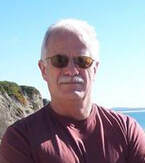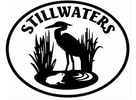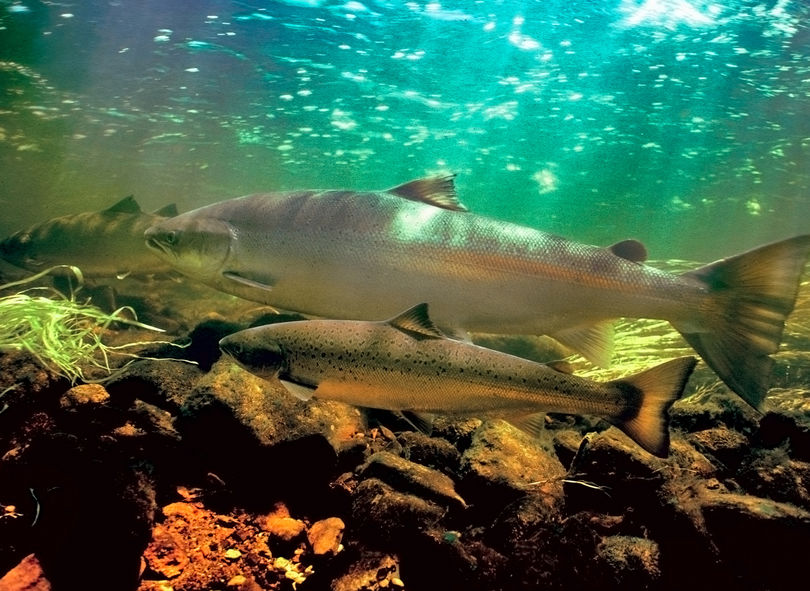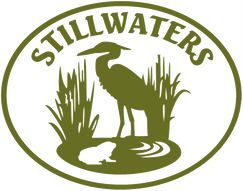|
At last night’s virtual Stillwaters happy hour: believe me (it was “happy), I checked in a little late as Melissa was finishing a Salmon story about Steelhead negotiating the Hood Canal Bridge. That sparked my memory about my own Salmon migration story. I promised the group I would share the details in writing at a later date due to the length and complexity of “the Salmon story." The story follows:
In 1986 (dating myself) I worked for the Navy Fuel Department in Manchester, WA. If you are not familiar with the Port Orchard area, this facility is just east of Port Orchard on Puget Sound across from the south-eastern tip of Bainbridge Island. My job position required me to oversee many of the environmental programs involving coordination with EPA, Department of Ecology, and the Puget Sound air quality folks. We also had a natural resources volunteer program that I was tasked to oversee. Our Deputy Director was very proactive in creating projects to reintroduce spawning Salmon into Beaver Creek that runs through the Navy property. In coordination with the state fisheries department, we became one of the facilities chosen for the Salmon delayed release program. This program involved raising Coho Salmon in net pins just outside a given stream in Puget Sound. The theory was, and may still be, that if Coho are delayed in migrating out to the ocean, they will not travel as far - maybe stay in Puget Sound and imprint on the closest stream. In our case, this was Beaver Creek that ran through the Navy property just prior to discharging to Puget Sound. We did this from 1986 to 1990 when I left to work for the Naval Facilities Engineering Command, in Bangor. We would receive about 20,000 Coho Fry to raise and feed in the pin for 3 to 4 months. Along with raising Coho Salmon, we repaired the fish ladder at the mouth of Beaver Creek and eliminated all other obstructions in Beaver Creek that preventing spawning migration. The Manchester Fuel Department was part of EPA’s National Pollution Discharge Elimination System (NPDES). This is a program where all fuel storage facilities are required to monitor water discharges from areas containing fuel storage tanks and discharging to navigable waters. We had seven of these bermed areas where storm water was collected and routed through oil/water separators prior to entering Puget Sound. In case of spills or leaks, the separators would remove the oil from storm water. We were required to inspect/clean and sample discharge from the oil/water separators once per month. One of these bermed areas contained five 50,000 barrel above ground jet fuel tanks. The bermed area collected storm water and discharged it through oil/water separator number 6 and out to Clam Bay (Puget Sound) in close approximation to the discharge of Beaver Creek. It was either the fall of 1986 or 1987 that we realized we had done a fair job of attracting spawning Salmon to Clam Bay. One fall day, I received a call from the fuel crew inspecting separator number 6. They informed me that there were fish in the separator. I asked them if they thought someone had thrown their gold fish into the separator. They informed me that these were, in fact, large Salmon. I arrived on the scene and began to assist in the Salmon extraction process. As it turns out, the separator was just across a paved road from Beaver Creek so we hand carried the salmon over to the creek, on-by-one. This was not an easy task given the slimy skin typical to a spawning salmon. I spotted an individual that seemed much larger than the others that were mostly 5 to 10 lb Coho. It was either a very well fed Coho or a Chinook that decided to take a shortcut to the nearest stream. I hit the paved road at a run with this 15 to 20 lb slab of meat. I got to the middle of the road when my passenger decided to protest. This released my grip and we both went sprawling along the road for about 10 feet. I tried my best to soften the Salmon landing and the fish seemed to have survived. In doing so, I went home that night with a good case of road rash - really wanted this fish to spawn in our rehabilitated stream. I picked up my passenger and made it to Beaver Creek. That day we must have transported 15 to 20 salmon before we blocked off the separator and did more modifications to the Beaver Creeks salmon ladder. The next fall was a little less labor intensive. I have not been back to Beaver Creek to see the fruits of our labor. Maybe this fall I will check it out. In 1986, the Manchester Fuel Department won the Navy’s annual environmental award - a competition that is Navy-wide.
0 Comments
Last month we talked about Sitka spruce trees and how to identify them. This month let’s discover a tree that is very prolific in our local ecosystem and one that has a very high commercial value - the Douglas fir. The Douglas fir is not a true fir, hence the scientific name Pseudotsuga menziesii. The genus name Pseudotsuga is Latin for false fir. This tree is also in the Pine family as are the Spruce trees. The Douglas fir is the tree of choice, along with Western Hemlock, for construction. A visit to Kingston Lumber will prove this as most of the dimensional lumber there is marked Hem/fir. Most replanting of clear-cut areas or selective cut areas are replanted in Douglas fir seedlings.
When I worked for the Shelton Ranger District (National Forest) in the 70s the common practice was to clear cut a unit of trees, burn the slash and replant with Douglas fir. If you look at an old clear-cut area that has grown back, it is most likely all planted Douglas fir. This tree is shade tolerant so it usually does not establish itself on a sunny area unless it is planted. Areas that are not planted with Douglas fir usually grow back initially in alder or (I hate to say it) Scotch broom. Douglas fir covers a wide area in the northwest from Alaska to central Oregon usually west of the Cascade Range. This tree can grow up to 300 feet in height. Young Douglas fir trunks have smooth bark with resin blisters. Older mature trees have dark brown bark that is deeply furrowed. This provides a good mnemonic for identification: deeply furrowed = Douglas fir. Branches are spreading to drooping. The leaves are evergreen, needlelike and spreading in all directions off the twigs. The seed cones of this tree can be a dead give-away to identification. The cones are dangling, reddish brown to gray, oval and 2.5 to 4 inches long. The cones will have what is called a bract at the top of each seed on the cone. These bracts will have three fingers sticking out from under each cone scale and this is one of the best distinguishing features for identification. Go out and identify this common Kingston area evergreen tree.  The Kingston area is blessed with trees that add to the beauty of our landscape and contribute to soil stabilization and groundwater retention. Many of our local trees have commercial value as well as tribal cultural value. The value of these trees and the forest can be expressed in many ways. Lewis Blackwell, in “The Life & Love of the Forest” says, “the products that forests provide, and their symbolic role in pop culture and human emotional well-being goes beyond their ecological value.” Take some time to walk a forest trail, far from city and road noise, and stop to listen. Aside from a bird or two, you may hear the rustle of trees talking to the wind or maybe just silence — a chance to reflect. Kingston is located in the Puget Lowlands Ecoregion. Ecoregions support specific types of trees that thrive based on rainfall, soil types, and elevation. One of the best places to discover our native tree species is North Kitsap Heritage Park. The trees in this park are older second growth. But you may ask, what species are these giants that can grow over 100 feet? Native tree species that have adapted to our ecoregion and dominate our local forests include Douglas Fir, Western Hemlock, Western White Pine, Shore Pine, Red Alder, Sitka Spruce, and Madrona. Besides appreciating their beauty, learning to identify them can be fun. Future columns will cover how to identify many of these trees, but for now let’s focus on Sitka Spruce which is in the Pine family. Trees within a family are further identified by genus and species. Sitka Spruce’s genus and species name is “Picea sitchensis.” There are other spruces in the Picea genus but only the Sitka Spruce has the sitchensis species name. Sitka Spruce are found along the coast and along stream and river beds west of the Cascades. This tree likes wetter, but well drained, nutrient-rich soils in areas of higher humidity. Identifying Sitka Spruce is relatively easy. It is an evergreen (retaining leaves, called needles, year-round). The bark is distinctive — grayish brown and very scaly, almost like fish scales. The branches spread almost straight out with drooping ends and the twigs are pinkish brown. The leaves are single stocked, unlike pine trees that may have 2 to 5 needles per stock, and are an inch long and very sharp at the end. One easy way to identify a spruce is to grab a branch, but I don’t recommend it! The cones are tan, 2-3.5 inches in length, egg shaped, and rounded at the end. Towering Sitka Spruce ring the Kingston Salt Marsh where Stillwaters has been studying the recovery of salt marsh vegetation since the 2018 culvert removal on West Kingston Road. For more information and photos of Sitka Spruce, check out my blog and Stillwaters’ research at www.stillwatersec.org. Now get out there and have fun using this information to find a Sitka Spruce. Ken Patterson is the Stillwaters Environmental Center Board President. |
AuthorKen Patterson; Board President Archives
May 2021
Categories |
|
FIND US ON SOCIAL MEDIA
|

 RSS Feed
RSS Feed

